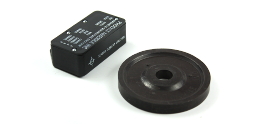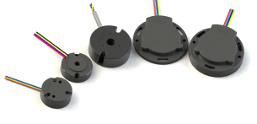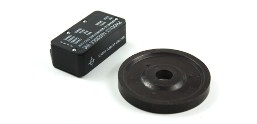Incremental Encoder Supplier
Phoenix America’s incremental encoders provide excellent speed, direction, and relative position feedback and are used in positioning and motor speed feedback applications which include industrial, heavy-duty, or servo/light applications. Since there are fewer components involved in Phoenix America’s incremental encoders designs, their systems are both inexpensive and simple. Phoenix America offers rotary incremental encoders in hollow-shaft, bearingless mounting options.
Incremental Encoder Basics
Phoenix America incremental encoders provide a specific amount of pulses in one rotation of the encoder. The output from this type of encoder can be a single line of pulses or two lines of pulses that are offset to determine rotation. The Phoenix America encoder kit consists of a multi-pole radial magnet and the ‘sensing’ enclosure. The PCB contains a sensor array that creates two primary signals for the purpose of position and speed.
Incremental Encoder Applications
Phoenix America’s incremental encoders are designed to be customizable and versatile to fit a wide variety of applications. Below are the three broad main categories of the application based on the environment:
- Industrial Environment - A general factory operating environment which requires standard shock, temperature, vibration, IP ratings, and moderate specs as needed in food and beverage, generally factory automation plants, and textile.
- Heavy-Duty Environments – A demanding environment with a high probability of higher temperature, shock, contaminants and moisture, and vibration requirements as such in steel, wood, pulp, and paper mills.
- Light-Duty/Servo Environments – A controlled environment with high temperature and accuracy requirements as seen in electronics, semiconductors, and robotics.
Incremental v. Absolute Encoders
Incremental encoders are great for simple pulse counting or frequent monitoring of applications such as direction, speed, and positioning. An absolute encoder provides a unique position value as soon as they are turned on by scanning the position of a coded element. While an incremental encoder begins counting from zero when it’s turned on, regardless of where the shaft is or its previous position This type of encoder is also more cost-effective and less complex than an absolute encoder.
Click to Contact us Today or call us at 866.315.7032






